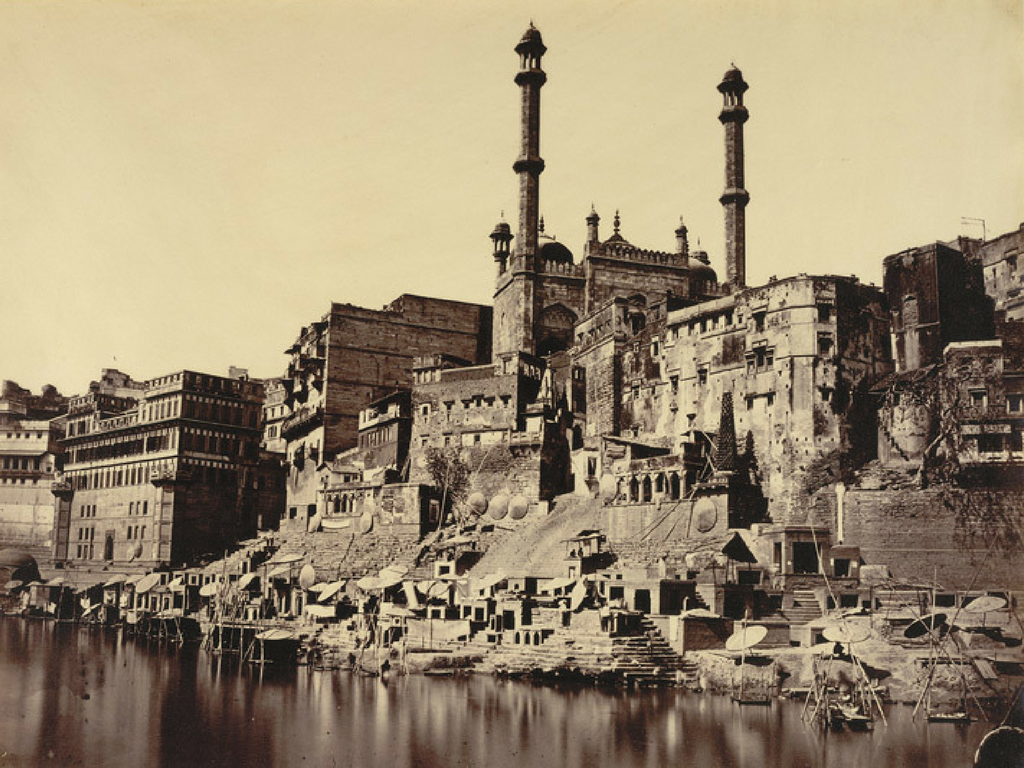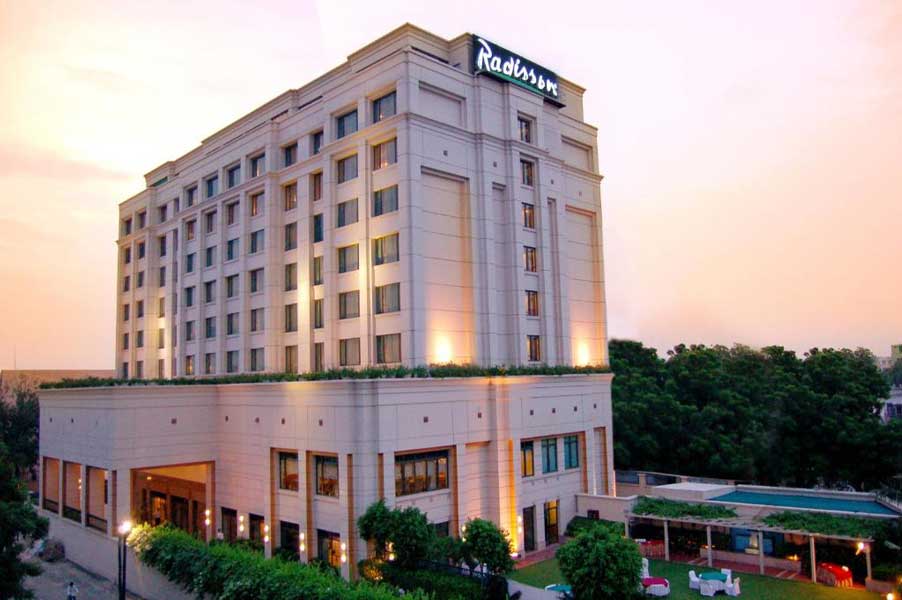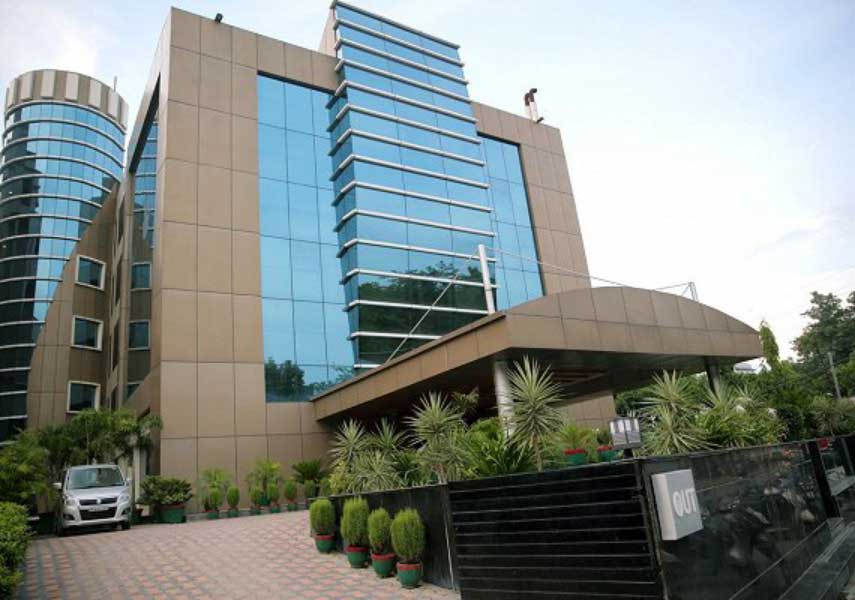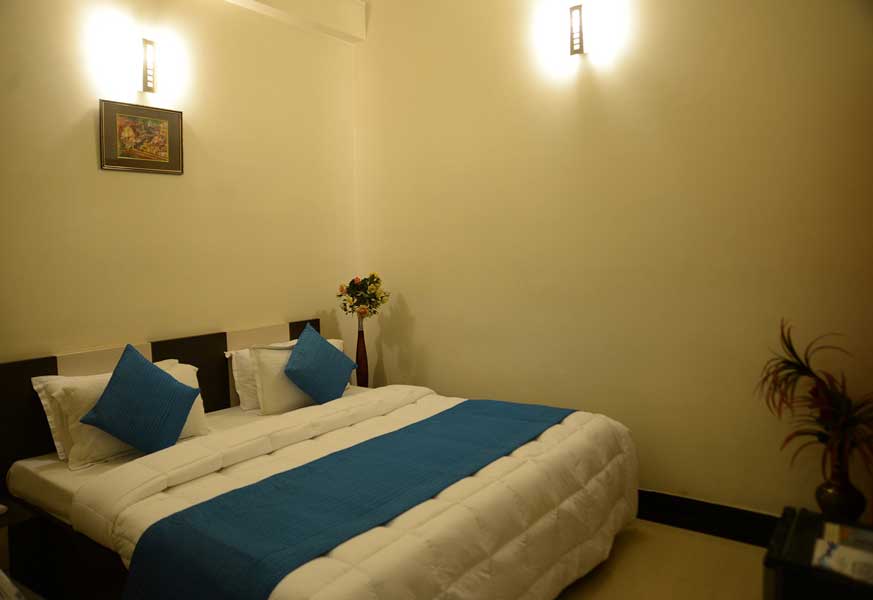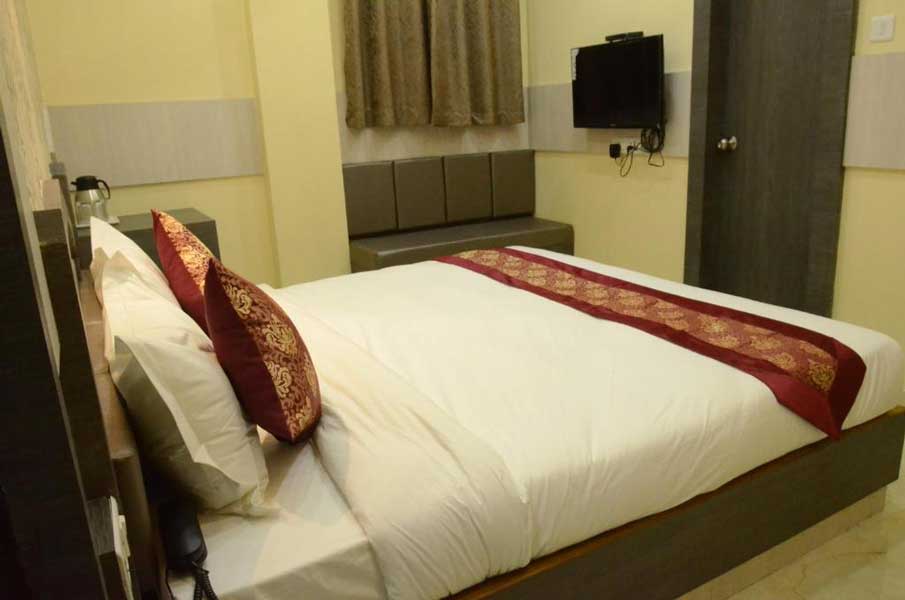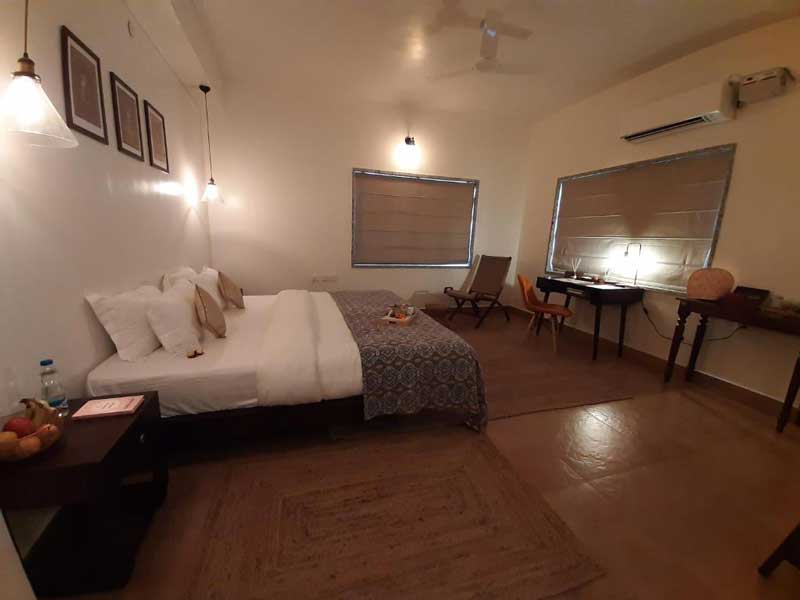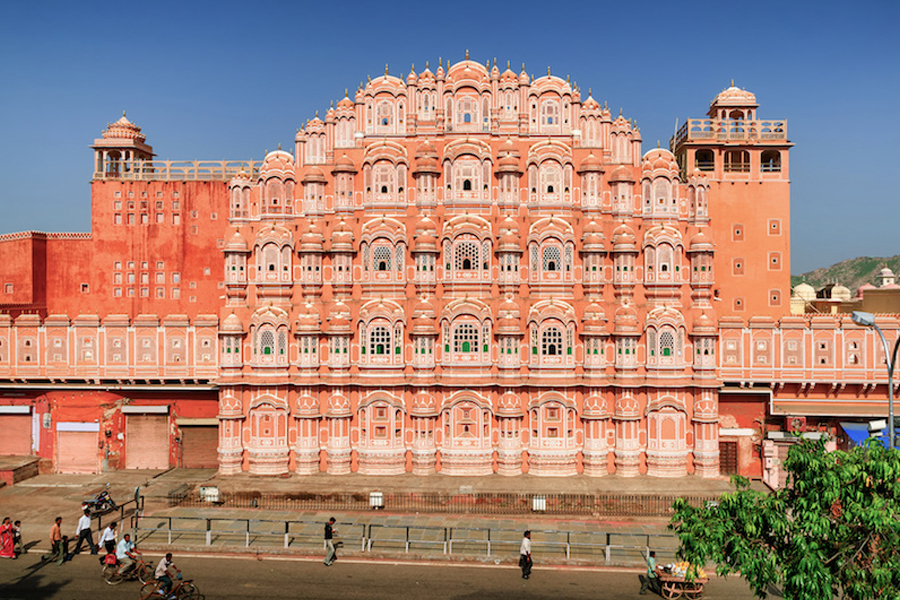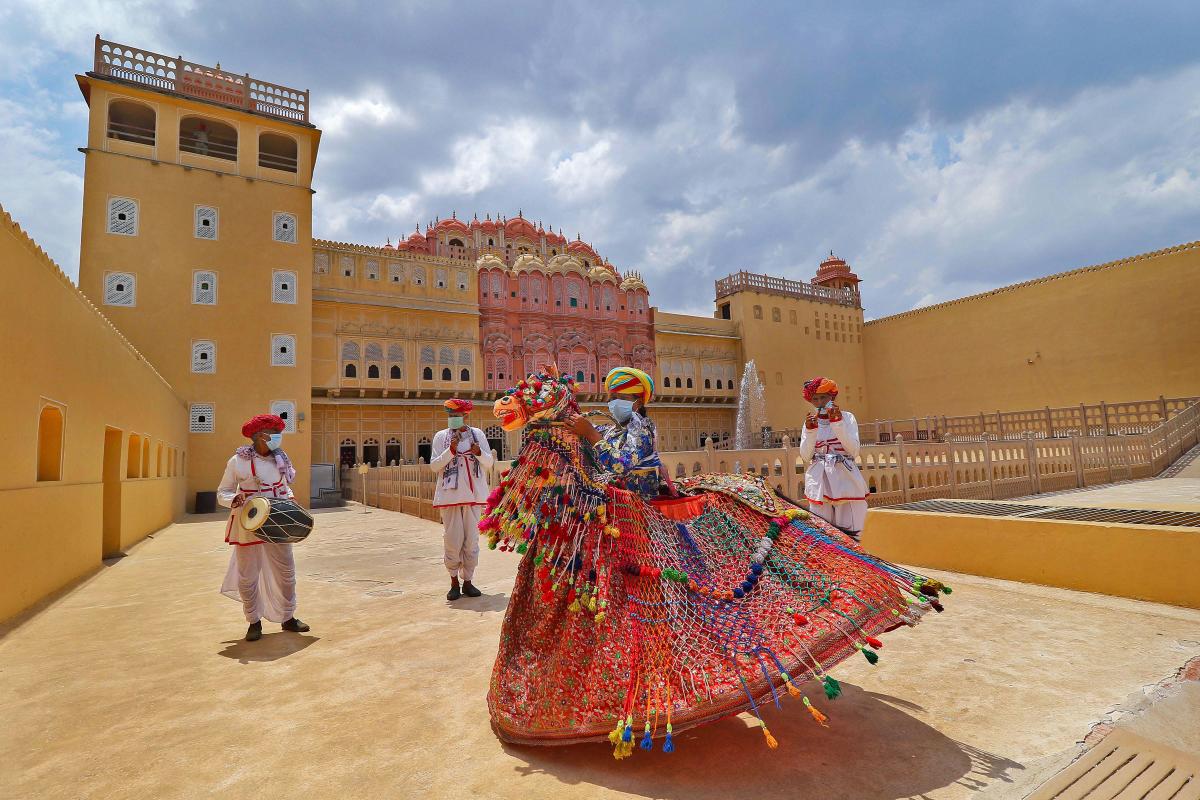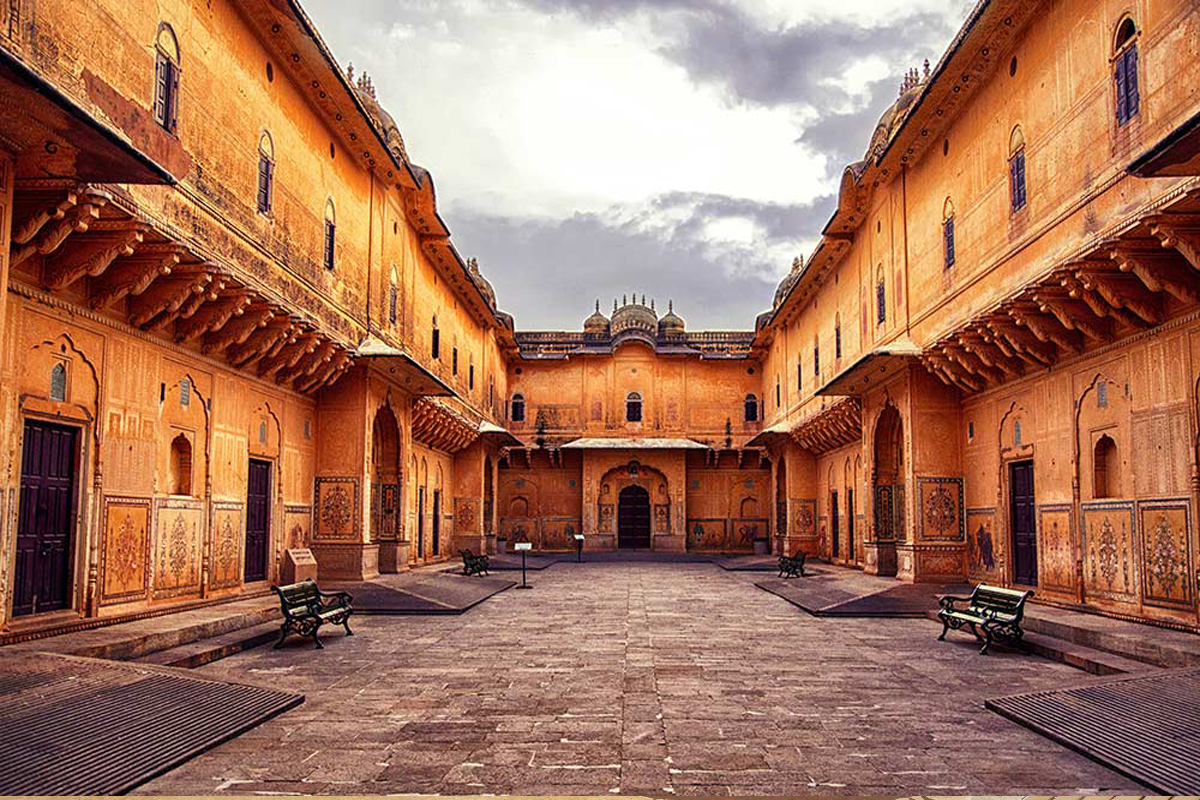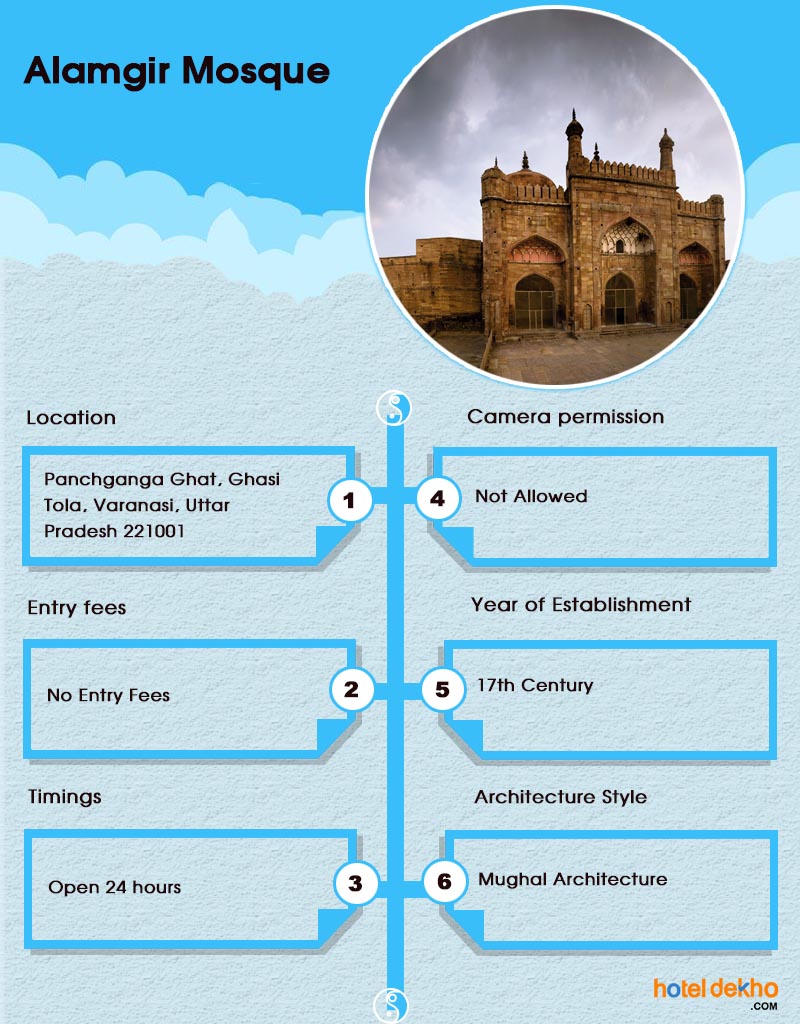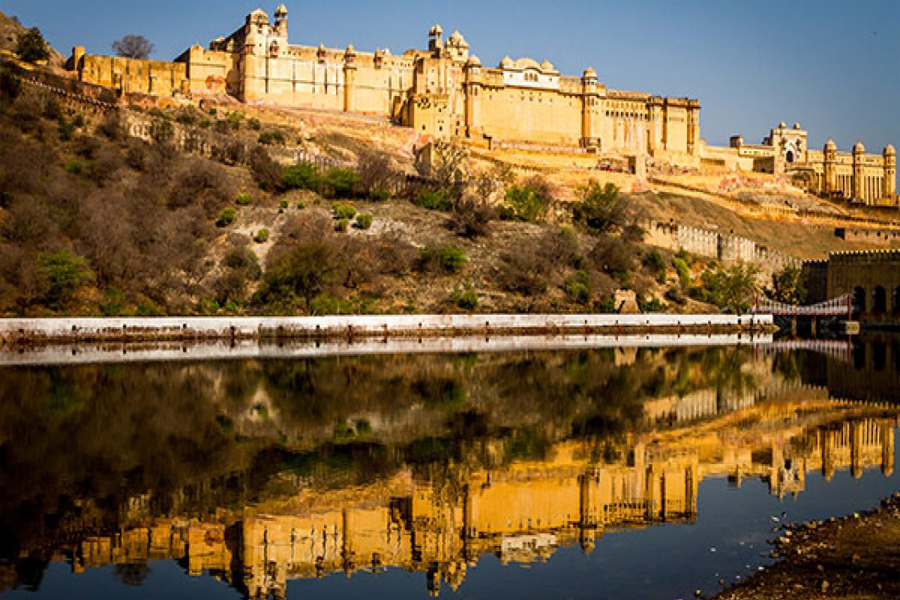Read More on Alamgir Mosque
History
The Alamgir Mosque was built in the seventeenth century. Aurangzeb, the Mughal Emperor, is credited with the construction of this mosque. It's worth noting that the Alamgir was constructed on top of the ruins of a Hindu temple. In the 17th century, a Vishnu Temple was built on the location of the Alamgir Mosque. Beni Madhav Rao Scindhia, a Maratha lord, is credited with the construction of this shrine. This temple has been recorded in history as one of the city's largest temples, stretching from Panchganga Ghat to Ram Ghat. After annexing Banaras, Aurangzeb ordered the complete destruction of all Hindu temples in the city.
This Vishnu Temple was one of many Hindu temples that Aurangzeb razed to a pitiful state just a few decades after it was built. In 1669, the Vishnu Temple was replaced by a mosque after it was destroyed. The Alamgir Mosque was the name given to this mosque. After Aurangzeb's honorific title 'Alamgir,' this mosque was named Alamgir. After becoming Emperor of the Mughal Empire, he accepted this title.
Architecture
The Alamgir Mosque is a great example of Hindu and Mughal art and architecture combined. The Hindu temple of Kirti Visheswar provided the materials for Alamgir Mosque. Three rows of tall stone pillars adorn this mosque. There are eight pillars in a row. The pillars at the extreme corners, on the other hand, are not single, but three-folded. The capitals are massive and colossal, and they are shaped like a cross. The temple's pillars have two bases, one fake and one true. On the bottom end of the shaft, one of the pillars can be found. The real base, on the other hand, is formed of a separate stone. Both of the pillars have exquisite carvings on them.
The mosque's inner wall is composed of stone. Visitors will notice numerous mason marks etched on them if viewed from the back. All of these sculptures and symbols attest to the mosque's age. The spout of a fountain is thought to have been worshipped in place of an image. This fountain arose in the middle of a tiny tank in the mosque's courtyard. Even now, some people venerate the tank with utmost veneration. According to the research done on this mosque, it was determined that it must have been a large structure. This is due to the fact that it not only took up a large amount of the current courtyard, but also a portion of the land.
Activities
- Muslim visitors can always pray inside the mosque.
- People also admire the architectural beauty of the mosque.
Tips for visiting
- Non- Muslims are not allowed inside the mosque.
- Open your shoes outside of the mosque before entering.
- Taking any food items inside the mosque is strictly prohibited.
- Do not create any kind of fuss and respect their beliefs.
Best time to visit
Winter (November - February) is the finest time to visit Varanasi since the temperature is mild and there is a gentle wind all day. Varanasi experiences extremely hot and dry summers. The summer months are best avoided because it is hot, dry, and sunny, making outdoor sightseeing difficult. The monsoons provide a refreshing change of pace, with moderate to heavy rainfall, whereas the winters are the best time to visit Varanasi, thanks to ideal weather conditions that highlight the city's beauty.
Nearby Atractions
- Panchganga Ghat
- Dashashwamedh Ghat
- Shri Kashi Vishwanath Temple
- Scindia Ghat
- Gangaa Aarti
Nearby market/ shopping places
- Golghar -It is one of the main markets in Varanasi and houses various types of items starting from the daily requirements to gift items.
- New Market: this market is famous for the idols of Gods and Goddesses as well as photo frames.
- Radha Krishna Market: Radha Krishna Market is located at Bulanala Maidagin Road which is famous for traditional clothes and other accessories.
Nearby Hotels
- FabHotel East View
- Hotel Sri Balaji
- Hotel Four Seasons
- Guleria Kothi Hotel
- Hotel River View
Interesting Facts About Alamgir Mosque
- Aurangzeb constructed a mosque in 1669 and named it Alamgir Mosque after his honorific title "Alamgir," which he had adopted after becoming Mughal emperor.


